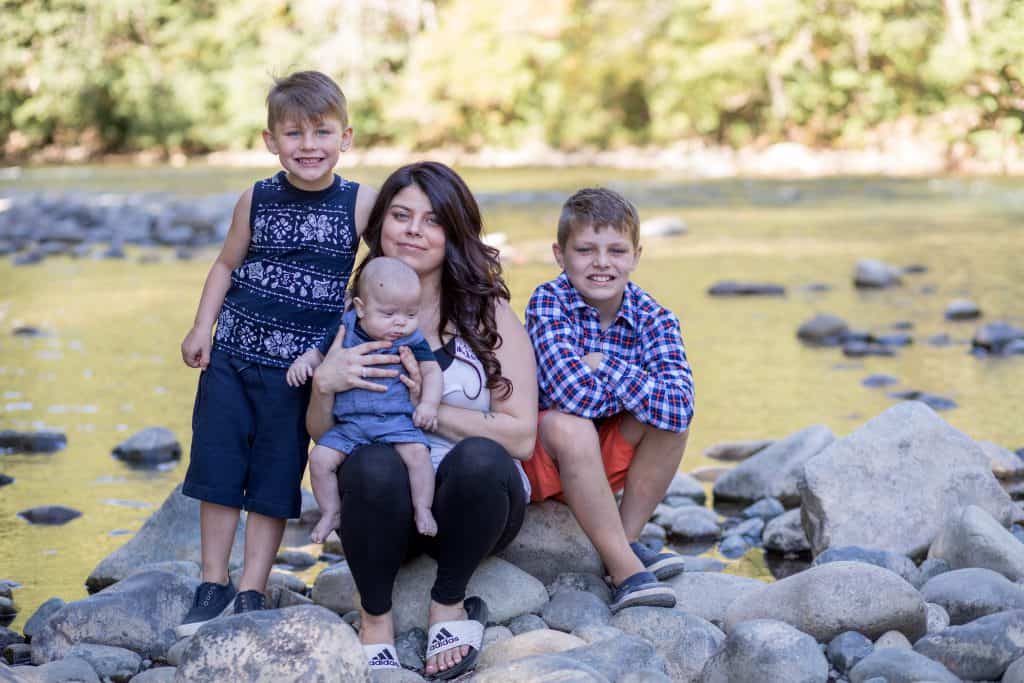Teamwork helped to save a pregnant mother and baby after mom went into cardiac arrest
The business of bringing babies into the world is inherently unpredictable. No one knows this better than the vastly experienced obstetricians at St. Paul’s maternity ward who deal with the most complex and high-risk pregnancies. But occasionally even they are tested by a delivery of rare complexity.
On April 1, Brittany Forrest, a 26-year-old expectant mother, seven months pregnant, had been airlifted to St. Paul’s after she’d experienced heart failure at her hometown hospital in Courtenay, BC.
“I just felt really sick for almost a month straight. The doctors kept telling me it was pregnancy symptoms,” says Forrest. “One night I felt really ill and I went to the emergency ward. I guess I collapsed there. They took a scan of my heart and saw that it was surrounded in fluid and they immediately flew me to St. Paul’s.”
Forrest was stabilized at St. Paul’s by the cardiology team but she remained very ill with her diagnosis uncertain. The teams at St. Paul’s are familiar with working together and preparing for care of both mother and baby in acute situations, but this case was the most extreme. The teams needed to prepare for an urgent, extremely high-risk delivery, knowing that the lives of both baby and mother hung in the balance.
“All of us were aware that Brittany was in the hospital and that she was quite ill, and that at some point, potentially as a worst-case scenario, we would have to do a delivery very quickly,” says Dr. Elisabet Joa, obstetrician at St. Paul’s. “So thankfully we planned for that, and I think that made all the difference.”
Then at around 3 o’clock on the morning of April 12, things took a turn for the worse. Forrest went into cardiac arrest.
Joa, who was on call at the hospital, heard her pager go off. It was a Code Blue emanating from Forrest’s ward. “We all ran down hoping it wasn’t her, but as soon as we hit the ward we realized that indeed her heart had stopped and they were trying to resuscitate her with CPR,” says Joa. “Once the heart has stopped you’re not getting blood to the placenta, so essentially the baby is not getting oxygen.”
Presented with an ever-narrowing window to save the baby, doctors made the decision to perform an emergency caesarian section on the spot, outside the operating room, using equipment they had already set up on a cart outside Forrest’s room as a precautionary measure.
In mere minutes Joa delivered a three-pound, 11-ounce baby boy who was quickly resuscitated by the awaiting pediatrics team. Cardiac surgeons rushed Forrest to the operating room, where they put her on an ECMO bypass machine, which did the work of her heart, giving it time to rest and recover.
Born two months premature, the tiny infant was stabilized and then transferred to BC Children’s Hospital, and Forrest spent the next several weeks healing at St. Paul’s. The team was able to determine the diagnosis after a biopsy on Forrest’s heart.
Once treatment was started, she responded quickly and eventually both mother and child returned back home to Courtenay, where they continue to enjoy good health.
“We’re doing good. We’re both back to normal. Jaxon is three months old. He’s healthy and weighs around eight pounds,” says Forrest. “I go to the heart clinic at St. Paul’s once a month for a check-up, but everything seems good so far. I’d really like to thank everyone at the hospital for giving me a second chance.”
“If Brittany wasn’t at St. Paul’s, she wouldn’t have survived. I can say that with absolute certainty,” says Joa. “We are constantly dealing with very complex, high-risk patients, and so we’ve learned to function together in a very unique way. There’s a respect and trust that’s developed among the different teams and that is the key. It’s such a critical thing when you’re dealing with high-stake cases in the middle of the night.”
Five hospital care teams at St. Paul’s sprang to action and came together in a moment to save Brittany and her son’s lives.
Here’s how you can help save lives too. Donate today to help St. Paul’s be the first hospital in Canada to put a multidisciplinary, hospital-wide simulation program in place, so our caregivers can work together to perfect their life-saving skills, and bring hope in the most difficult and complex situations.
